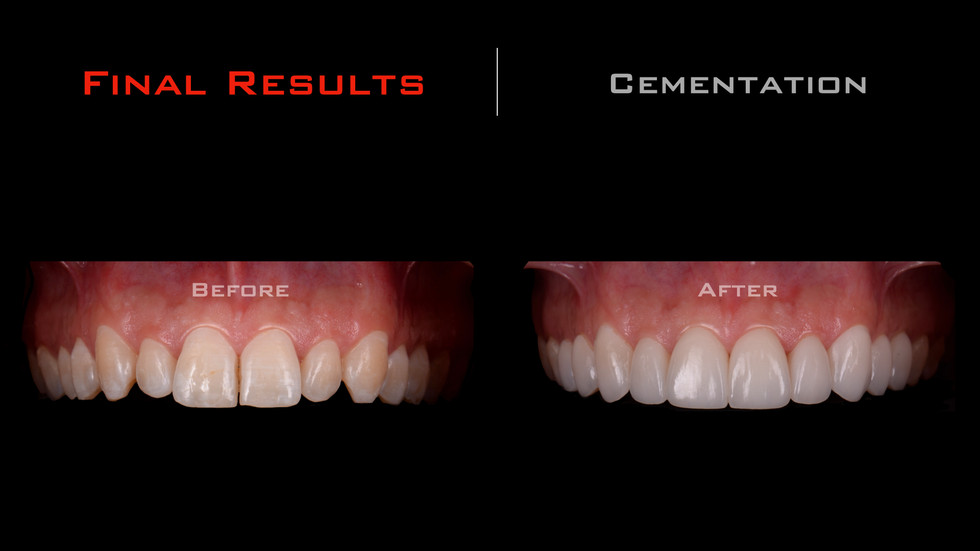How we tailor your smile ?
- Amiram Avitan
- Dec 2, 2020
- 2 min read
Updated: Nov 22, 2021
A smile is a personal trait that can define the level of self esteem, confidence, and even success of a person. Throughout this page we will show you how every smile we make is specifically designed to all of the facial features and personality of our patients.

DOCUMENTATION
A series of photos are taken from the patient. Together with the intra-oral dental scans, we can advance to the planning phase.
PLANNING
These are the dental impressions of the patient's teeth. Nowadays, they are taken with an intra-oral scanner that will create a STL files.

Smile Analysis
All of the pictures + scans of the patient is uploaded to the computer. With the help of all this information collected, we are able to tailor a smile that is specific to all the facial characteristics of the patient.

Smile Design
On the picture below, we can see the future ceramics size and shape which are chosen depending on all the information that we collected above. Now, we are ready to show the patient how this new smile will fit him on the computer.

Design Evaluation
In the stage below, the patient and the dentist will evaluate the integration of the new smile together. The patient can always suggest his changes and it can be rectified directly. Once this step is accepted, we are ready to move to the mock up phase where the patient can see a preview of his end result with the help of a temporary material.

Smile Trial
The patient can evaluate his designed smile live. The advantages of this phase is that the patient can have an idea of the end result. Moreover, the patient can always suggest what he wants to change. The dentist will perform the changes, take new pictures/scans, and send the new information to the dental laboratory. Thanks to this step, we can obtain more predictable results since we made the changes before receiving the permanent veneers/crowns.

PREPARATION
Thanks to the guided prep mock-up, we are able to define how much from the tooth we need to prepare. This is a big advantage since the preparation for this case were controlled between 0.3 to 0.5 mm. Therefore, most of our tooth structure is conserved.

Minimal Preps
In the following picture, we can notice that the dentist was minimally invasive thanks to his microscope. The biggest advantages is that most of the tooth is conserved and the bonding of ceramics to enamel is much stronger + lasts longer.

IMPRESSION
An intraoral scanner is a device that is used to capture a direct optical impression. The scanner projects a light source onto the area to be scanned. The images are captured by imaging sensors and are processed by scanning software, which then produces a 3D surface model.

Intraoral Scans
These are the 3D surfaced model of the prepared teeth. These models will be sent to the lab where they will start producing the ceramics restorations (in this case ceramic veneers).

LAB WORK
Veneers with a BL3 Shade
FINAL RESULTS



























Comments